Last Updated on October 30, 2025 by teamobn
Contents
Nyborg, Denmark – Arkitema Architects
Project Year: 2013
Area: 156.0 m2
Photographers: Jesper Ray, Helene Høyer Mikkelsen
The Maintenance-Free House teaches us not to judge the book by its cover. This simple wooden structure was built to last for 150 years. Basically low-fuss and hassle-free, it requires no servicing during its first 50 years. Yes, that’s five decades of being maintenance-free – which explains the name.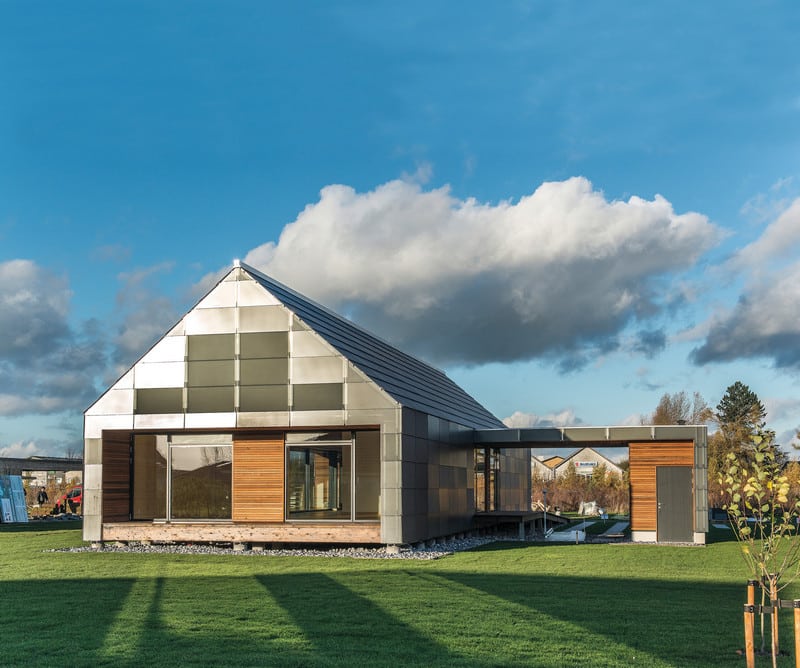
The design of the house is inspired by Danish long houses that are popular among Vikings. Materials were prefabricated off-site. A truck transported the prefabricated components and then assembled on location using screwdrivers. It took only two days to finish everything.
High-strength plywood was used as the main building material. But plywood alone, in a wet and windy coastal part of Denmark, won’t last long. To address this, the architects wrapped the structure in recycled glass. It acts as a shield against the wind, rain, and other elements.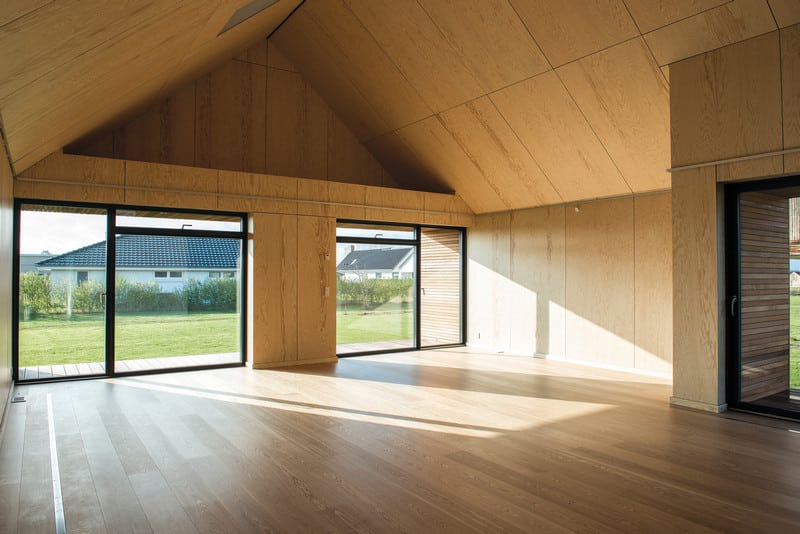
The Maintenance-Free House is simple and resilient. It features a lodge-style open-floor plan, plenty of natural light, and high cathedral ceilings. There’s also a semi-attached carport/shed at the side. If you’re looking for longevity, this is it.
Notes from the Architect:
The Maintenance-Free House (New Materials) is part of a large development project: The MiniCO2 Houses. The project involves a total of six detached houses, each of which illustrates various aspects of reducing CO2 emissions in the construction, use and maintenance of a house.
The Maintenance-Free House focuses on “maintenance and service life” and examines how much CO2 can be saved when a house is built to have a service life of at least 150 years, and the building envelope needs no maintenance for the first 50 years of that service life. House A has been constructed using traditional materials, which have proved their long service life, and House B – described here – has been constructed using new materials, which are expected to have a long service life.
Maintenance-Free House B has been constructed as a long house with a covered east-facing entrance located exactly in the centre of the building’s longitudinal side and a 40-degree pitched roof. The interior of the house has been designed as a wooden “box”: one large continuous room with open beams and furnished with low closed boxes. Daylight enters through the four skylights, from the entrance area, from the full-height windows and doorways in the end walls, and from an approx. 10-meter long glass section.
The Maintenance-Free House B has been built of wood, perhaps a surprising choice for the Danish climate when the goal is a long service life. But Denmark has many very old wooden structures, owing much of their longevity to excellent ventilation. The timber structure of House B has been created in a manner which ensures continuous ventilation on all sides, including under the house, which has been raised on a series of pad foundations.
Plywood, glass and air
- The load bearing structure of the house is of wood: 18 self-supporting frames of bonded, high-strength plywood prefabricated and assembled at a component factory and transported to the site. The goal here has been to achieve high precision and avoid any of the damage that can result from the typical inaccuracies of a construction site. The objective is low maintenance and a long service life. This process combines the building’s outer and inner frames in one unit , creating a completely open building without columns, beams or tension members, assuring the house full flexibility and a long-lasting configuration.
- The house is fitted with a “glass shield”, which wraps around the roof and all façades of the building, protecting its wooden construction against rain and wind. The glass shield is made of recycled glass and in principle is indestructible. The shield is one continuous surface, unbroken by vent pipes – again ensuring extended service life by avoiding leakage from joints.
- All windows and doors are pulled back from the façade and located in deep sheltered niches, which provides effective protection against the elements.
- The house is raised 30 cm above the ground and built on pad foundations. This device protects the house against rain and at the same time ensures that it is well ventilated on all sides, both under the building and up under its glass façade, in the gap between the glass shield and the wooden construction.
- The heat that is generated in the gap between glass and wood will be utilised in an extended ventilation solution, with the hot air saving significant amounts of CO2.
- Reducing carbon emissions
Carbon emissions from the materials used in the Maintenance-Free House B are less than from a normal average house: the Reference House (3.5 kg CO2/m²/year compared with 5 kg CO2/m²/year for a 50-year period). This is due mainly to the extensive use of wood, which contributes positively to the overall CO2 saving, but also to the point foundations, which use less high-content CO2 concrete than the traditional strip foundations of the Reference House. On the other hand, the house has a high carbon impact from the use of glass, due in part to the tempered glass in the façade and partly to its total window area, which is approx. 50% greater than in a standard house.
In both the Maintenance-Free House B and the Reference House, the replacement of materials calculated over 50 years accounts for about 0.5 kg of the total carbon emissions from the house. It may surprise the observer that the carbon-saving effect of low maintenance is not less than that of the Reference House – but this is because the Reference House is actually fairly well placed in this respect. It has been built from brick, which is virtually maintenance-free, and its other CO2-intensive building elements – such as foundations, glass and mineral-wool insulation – rarely require maintenance. At the same time, the other elements that may require maintenance or replacement – doors, windows, interior surfaces, etc. – are relatively “light” in terms of CO2 and therefore have only a modest effect on the total CO2 calculation. But it is also worth bearing in mind that for the owner of the house, low maintenance on these elements means less frustration – and cash savings on workmen and materials.
All in all, the results show that if construction and design – as performed in the Maintenance-Free House B – lead to an extended service life for the house as a whole, they will reduce carbon emissions over the total expected service life. Especially if it means avoiding the need to build a completely new house.
The MiniCO2 Houses development project
The Maintenance-Free House is one of six demonstration homes built in the coastal town of Nyborg in central Denmark. Five of the houses examine various ways of reducing carbon emissions; the sixth house brings these experiences together.For many years, the efforts of the building industry to reduce CO2 emissions – not without reason – have focused on energy for heating and therefore also on airtightness and insulation. However, as national and EU building requirements become ever stricter in this area, it becomes relevant to examine how the industry can also reduce carbon emissions – for example, in terms of materials and of user behaviour.
The main objective of the MiniCO2 Houses development project is thus to reduce CO2 emissions in the construction, operation and maintenance of a house.
Click on any image to start lightbox display. Use your Esc key to close the lightbox. You can also view the images as a slideshow if you prefer ![]()
Exterior Views:
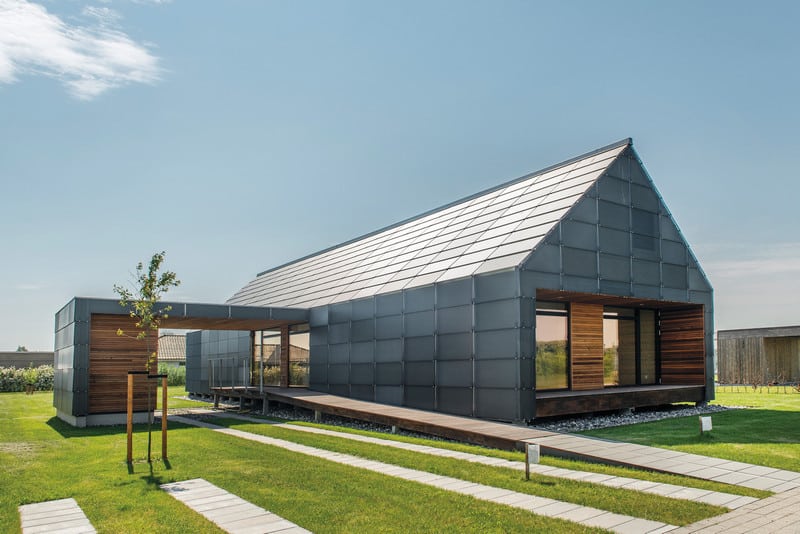
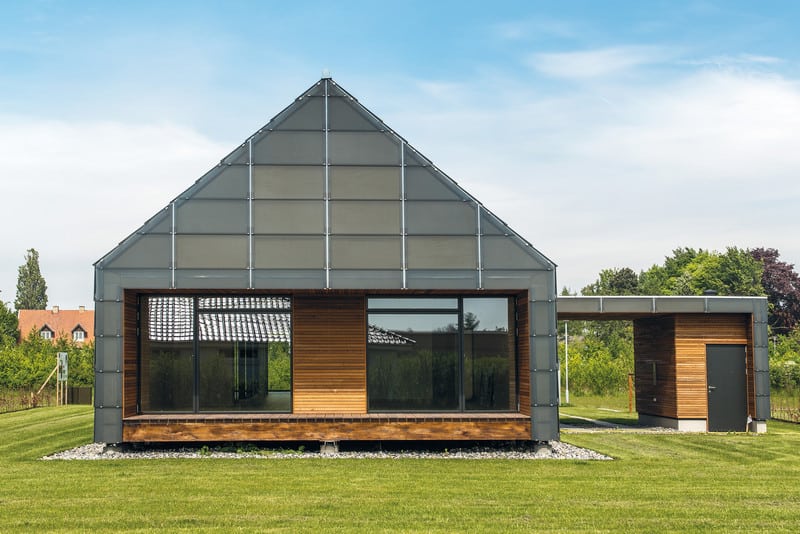

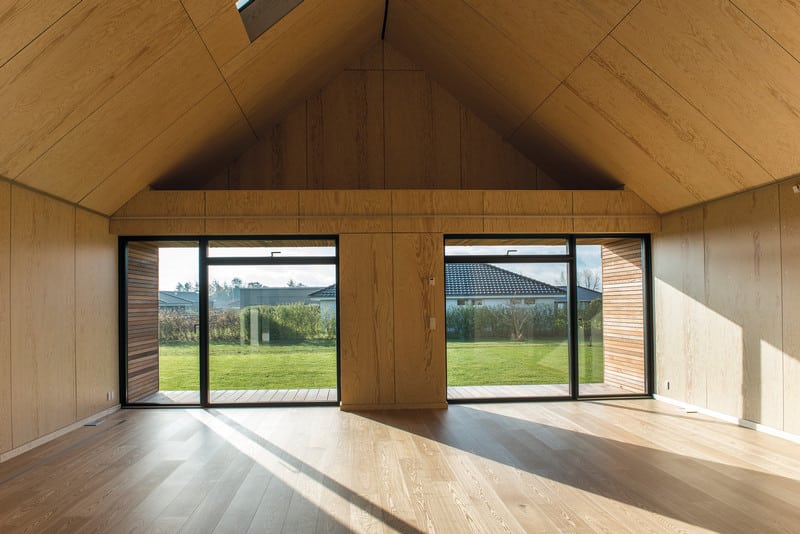
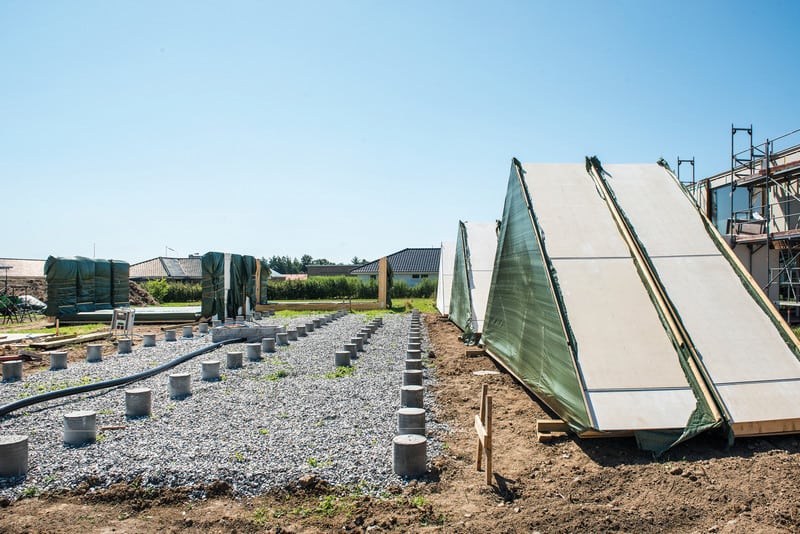


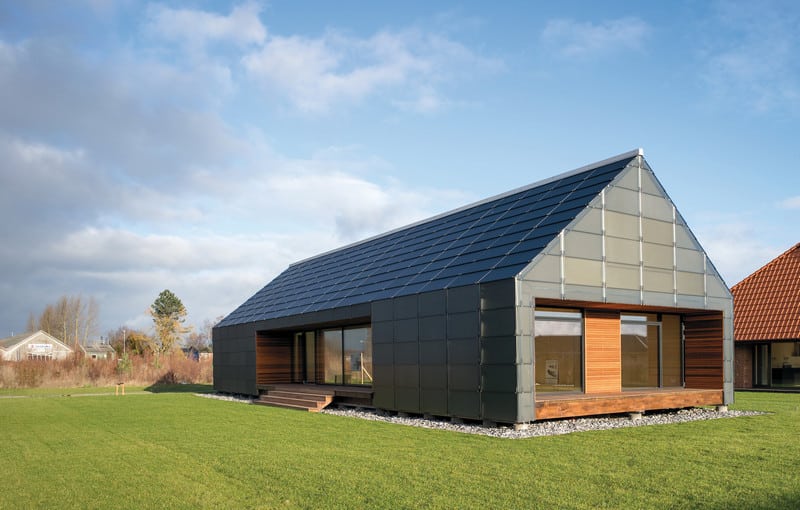
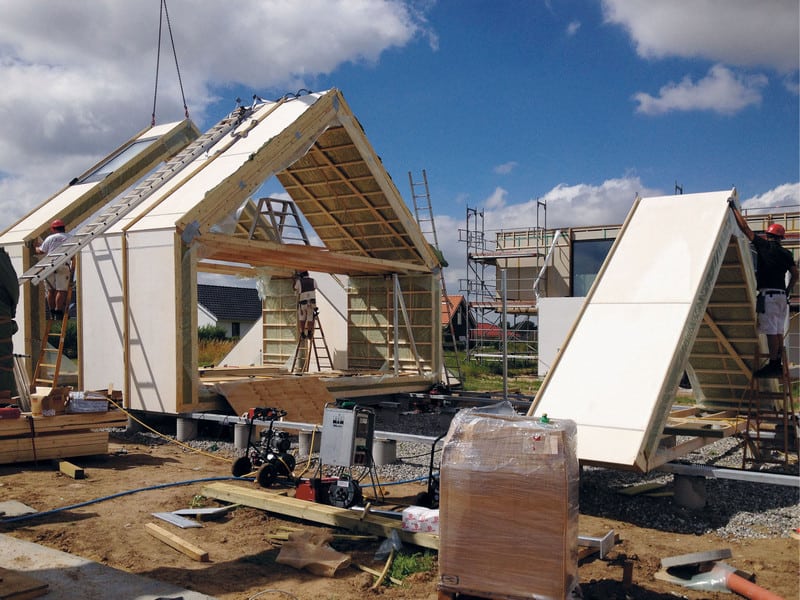

Interior Views:
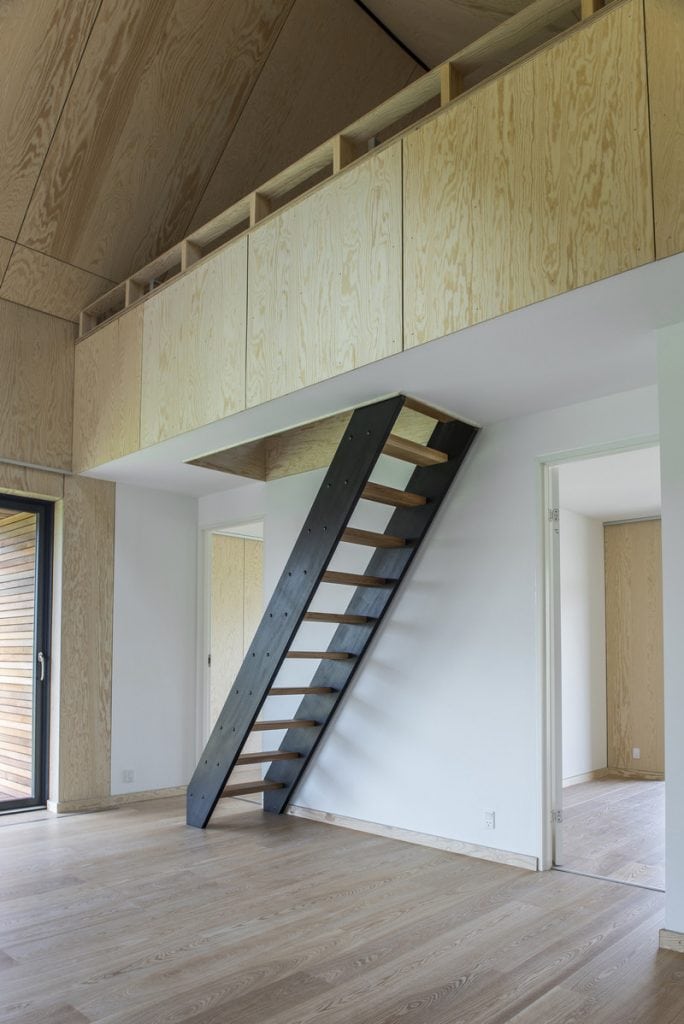
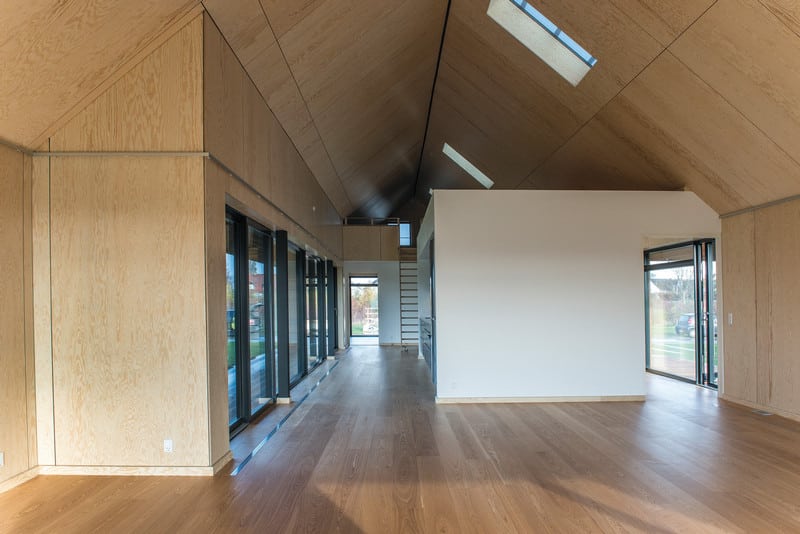
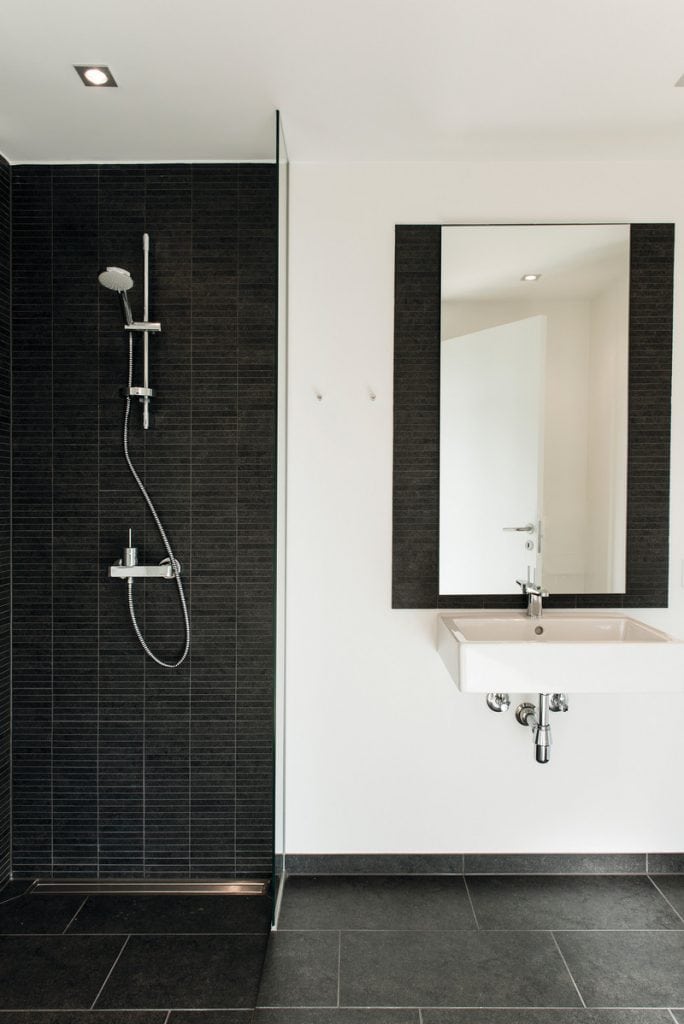

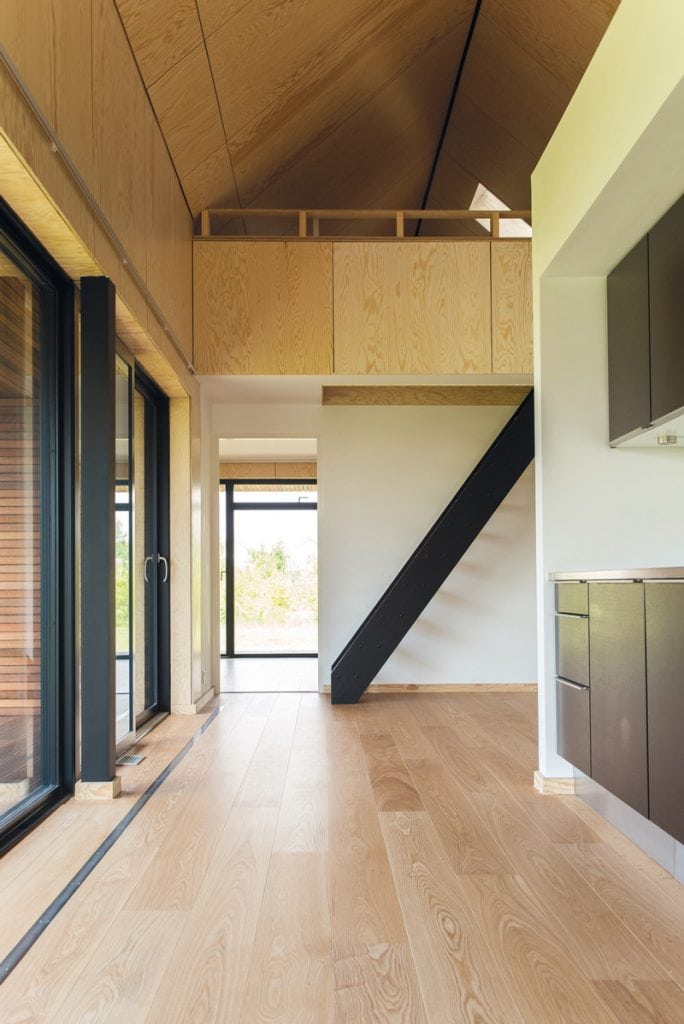
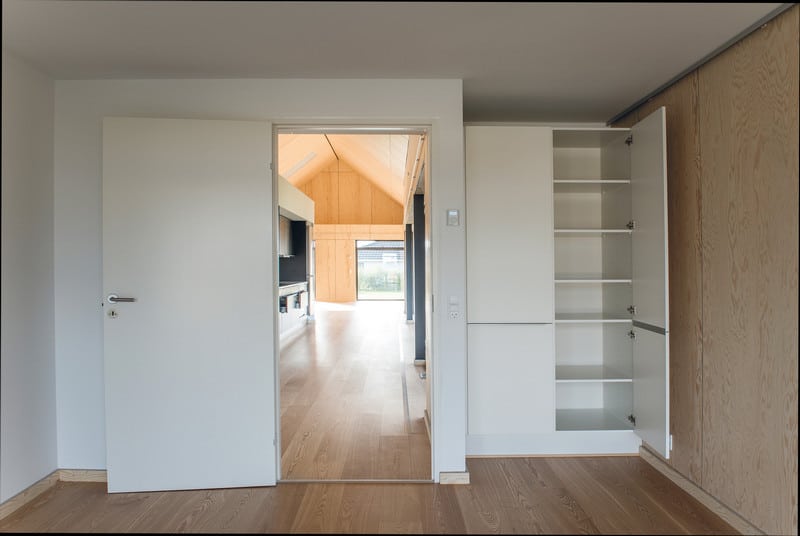

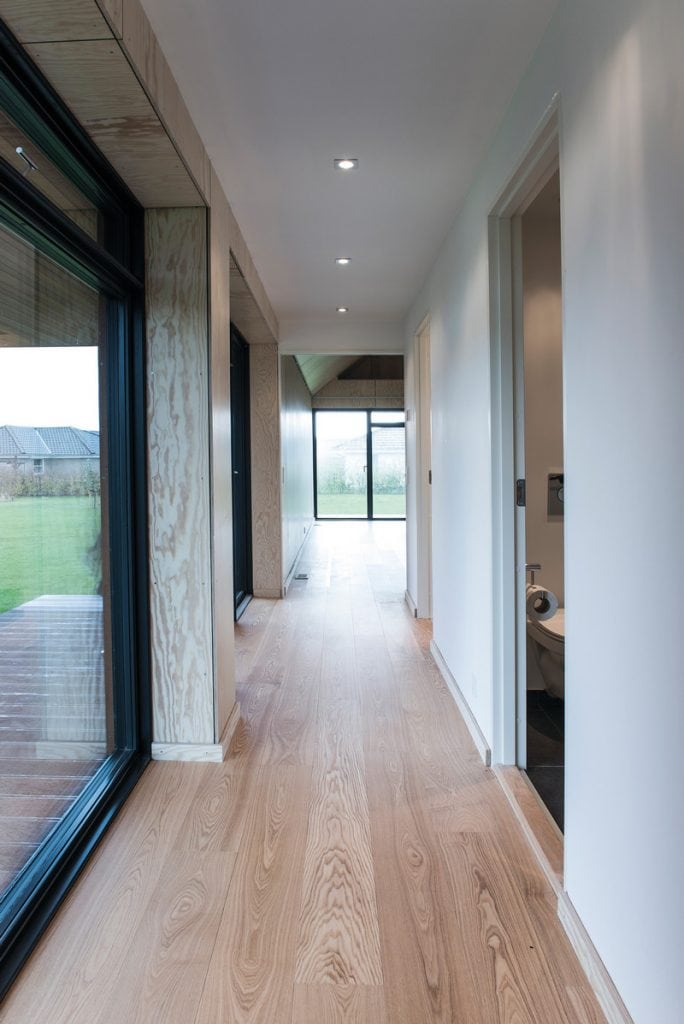


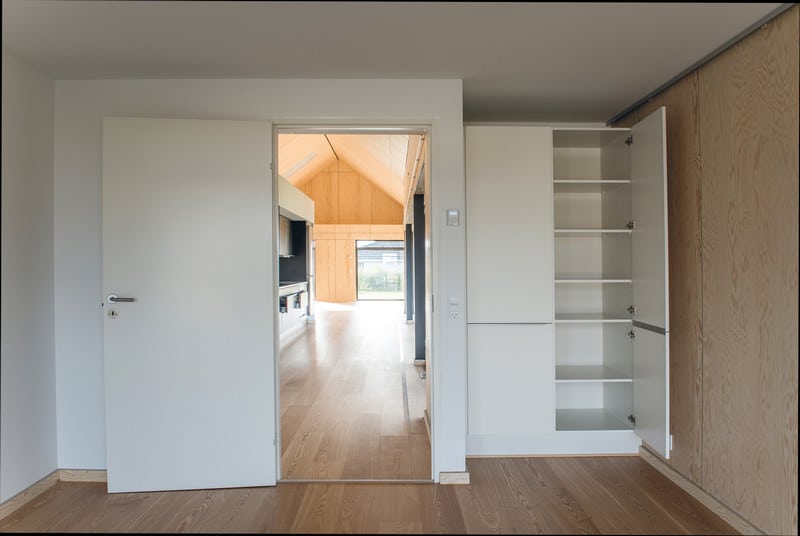
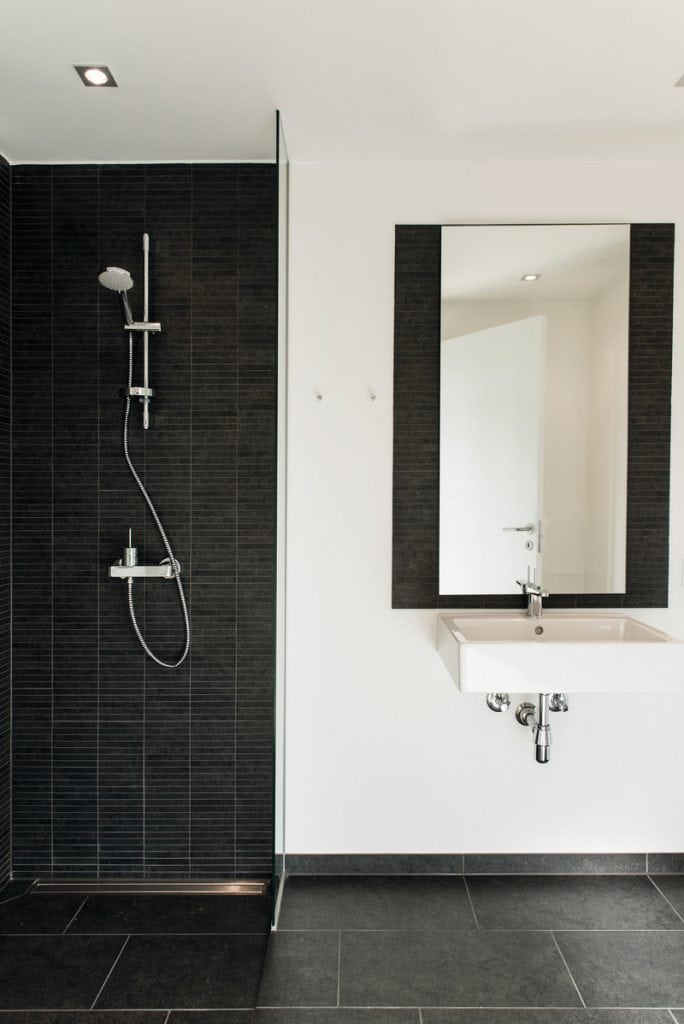
Drawing Views:

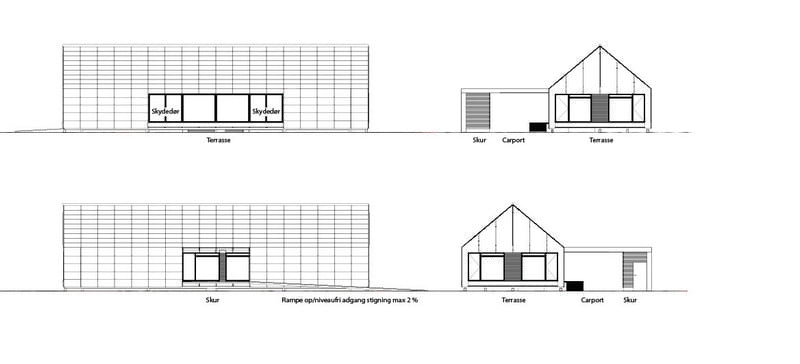

North Fork Bay House is another modular home that’s worth checking it.






